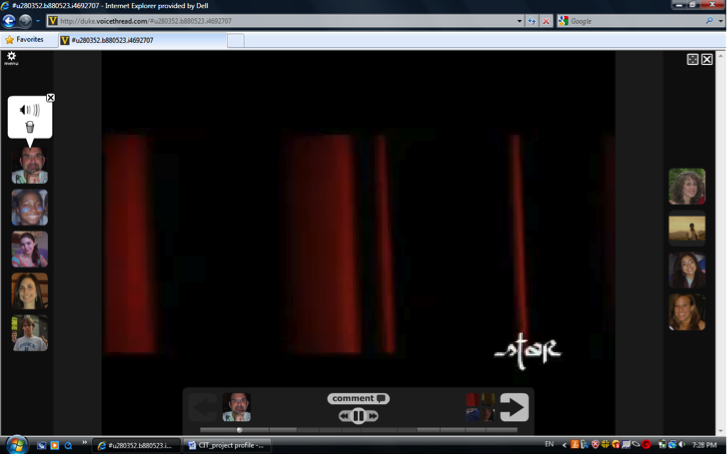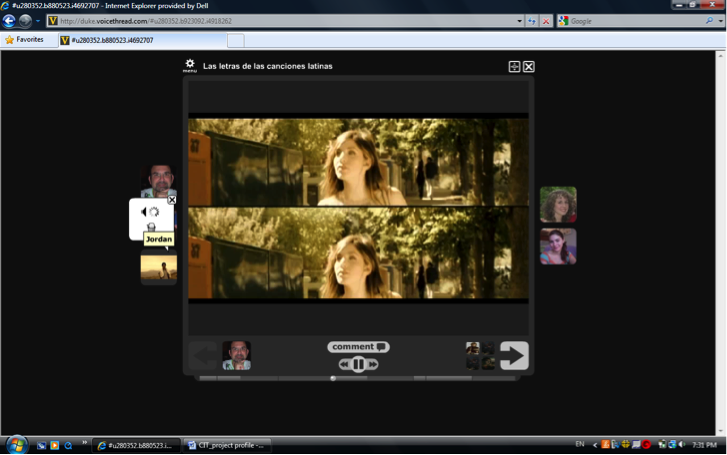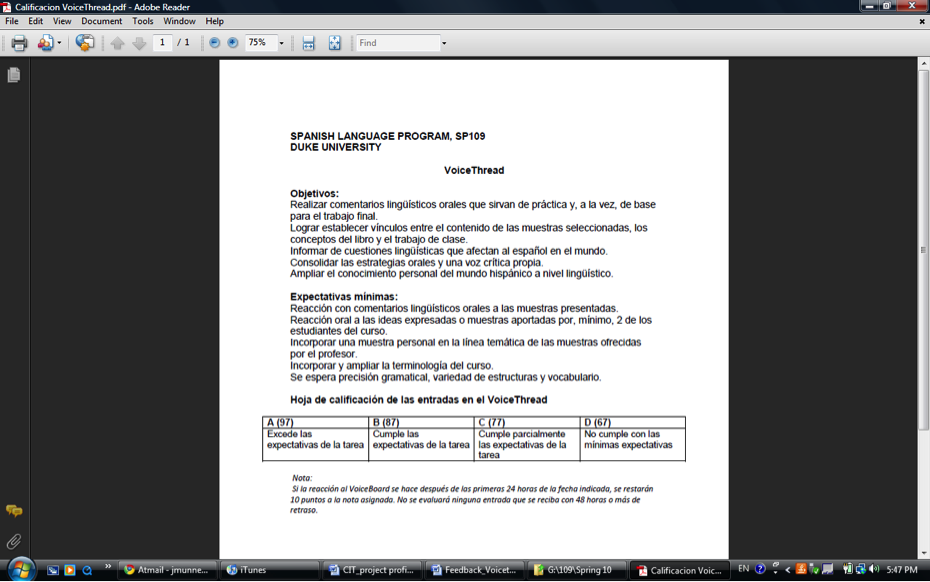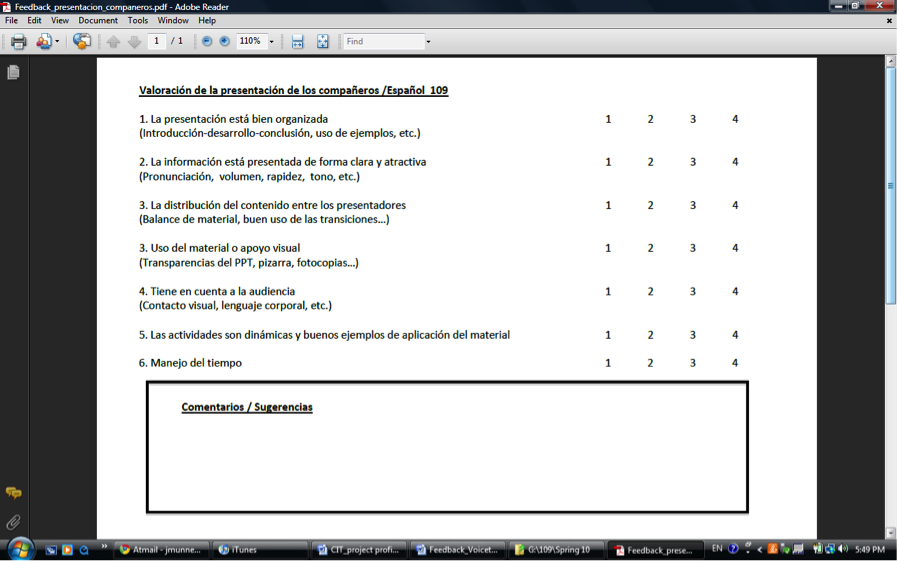Joan Munné, Lecturer, Romance Studies
Joan Munné was one of fourteen faculty and one graduate student who participated in a Spring 2010 CIT Fellowship for language faculty interested in exploring with colleagues the most effective and most efficient ways to increase students’ oral production in the target language, in order to increase students’ language learning.
One of the main goals of Munné’s Spanish 109 course is to develop students’ skills in analyzing data, forming and testing hypotheses based on the distinctive sounds of Spanish word formation, sentence structure, and discourse formation. He had previously asked students to do oral presentations using podcasts and Wimba Voice on linguistic topics, and he provided feedback and assessment for the students using a rubric. He felt that students didn’t seem to find value or a connection between the reflective presentations and what they had studied in class, so in Spring 2010 he wanted to try something that seemed to have an extra visual and interactive component: VoiceThread for assignments four times during the semester, combined with written work in a course wiki and oral presentations in class.
He assessed the students’ VoiceThread assignments using a holistic rubric, and also created rubrics for peer and self assessment of the in-class oral presentations. The peer-assessment rubric was an adaptation from the rubric created by the students in one of the other Fellows’ classes, with the addition of a box for comments and suggestions. Munné was impressed by the uses the students made of the comment box: to congratulate, clarify certain impressions, point out those aspects that they thought were not clear or could be improved, give encouragement, further develop why scored their assessment as they did, etc. The self-assessment and instructor rubrics were adapted from similar tools used in Advanced-Intermediate Spanish courses.
The students generally reacted positively to the experience of using Voice Thread. They found it was a great tool to review and practice what they have read in the textbook and what had been discussed in class. They wrote:
- “Great tool to create interactive learning experiences”
- “The effectiveness of Voice Thread was unexpected”
- “It was the best way to practice and reinforce what we have learned in class”
- “It definitely solidified concepts learned in class and was very helpful to review”
- “I enjoyed the extra practice speaking”
- “A good review and practice through visual/audio factors that were more engaging”
- “I think it was an extremely effective way to apply the linguistics that we learned in class”
The main negative comment mentioned by one student was that it can become a bit tedious or repetitive, and sometimes some students were making the same kind of comments.
On the assessment aspect, the students thought the instructor feedback using the holistic rubric was useful and helped them to see what mistakes were made in their approach to the analysis and how they could improve. Two of the students wished they could have more assessment from peers, and one student thought that perhaps “one-on-one” feedback would be more useful.
The peer-assessment and feedback pilot on the oral presentations also went well; students appreciated getting immediate feedback from their classmates.
Munné was very happy with the results of using VoiceThread and plans to continue using it in this type of course. He was also pleased with the assessment tools and approaches, but will continue to explore options and improve his methods.
Best practices and suggestions for other faculty:
- Set clear expectations for assignments
- Make students take ownership of the class
- Use a variety of topics for Voicethread assignments, to better engage students




